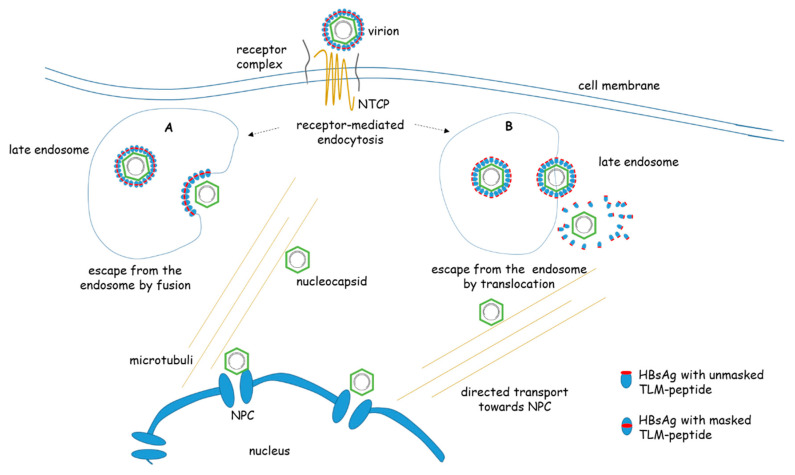Figure 3.
Entry and post-entry steps of HBV. HBV enters the cell by binding to a receptor/receptor-complex containing NTCP (Sodium taurocholate cotransporting polypeptide). The internalization occurs by receptor-mediated endocytosis. This cartoon shows two models that describe the escape from the late endosome: A) by membrane fusion leading to the release of the nucleocapsid into the cytoplasm. B) By a translocation process mediated by the TLM peptide. In the mature virus the TLM (red dot) is masked. Due to proteolytic processing of the surface protein in the endosomal compartment the TLM is unmasked and exposed to the surface of the viral particle. The surface-exposed TLM peptides mediate the translocation across the endosomal membrane into the cytoplasm. Here the processed surface proteins are stripped off. The cytoplasmic nucleocapsid is delivered by a directed transport involving microtubule to the nuclear pore complex (NPC). (NTCP = Sodium taurocholate cotransporting polypeptide, TLM = translocation motive)

